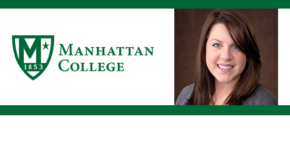 Should we embrace the concept of disability as a positive component of student diversity?
Should we embrace the concept of disability as a positive component of student diversity?
Katherine Aquino, faculty member in the school of continuing and professional studies at Manhattan College, looks into this question.
Katherine C. Aquino holds a BS in psychology, MA in school psychology, and a PhD in higher education policy. Her research interests include the socio-academic transitioning into and throughout postsecondary education for students with disabilities and other underrepresented student groups. Katherine serves as Faculty Member and Quality Assurance Coordinator in the School of Continuing and Professional Studies at Manhattan College. Katherine also serves as Adjunct Professor in the Psychology Department and Affiliate Doctoral Faculty Member in the Educational Technology Department at New Jersey City University.
Students With Disabilities
Individuals with disabilities constitute the largest minority group within the United States and approximately one in every ten students enrolled in higher education self-identify as having a disability. Although approximately 2.5 million students participate within the college environment, there continues to be the misperception that student disability is an impairment, rather than a part of student diversity within the higher education environment.
As members of the postsecondary community, it is our mission to support all student groups. However, do we address this student group solely as needs-based or do we embrace the concept of disability as a positive component of student diversity? As faculty members and administrators it is vital to ask: Do we truly understand the diversity of and within the concept of “disability” in higher education?
Driven by these questions, it was vital to explore the role of student disability in the college environment. Using longitudinal national data of first-time students enrolling in the four-year postsecondary environment, my research revealed that, in addition to traditionally defined components of student diversity including race, gender, and socioeconomic status, disability has predictive influence on students’ perceived academic and social integration tendencies within the four-year institutional environment. Moreover, disabilities categorized as “non-apparent” including learning disabilities and mental health categories, had a negative influence on students with disabilities’ perceived social integration opportunities in higher ed.
This research presents evidence to continue the argument that disability contributes to students’ perceived opportunity for socio-academic integration and that because disability had a similar predictive influence as traditional components of student diversity, there is a strong justification to include disability in the broader understanding of student diversity in higher education.

Comments
2 responses to “Katherine Aquino, Manhattan College – Students With Disabilities”
Great statement by Dr. Aquino. Disability needs to be truly recognized as part of the diversity statement that every post-secondary institution imparts on their respective campus environments. It is one of the best methods to facilitate an on-going effort to incorporate accessibility processes in all facets of the higher education experience.
Nicely done! Disability is an aspect of diversity, and I, as a disabled person, with multiple medical issues, wish this university, Michigan Medicine, and HITS would take it more seriously as an aspect of employee health, diversity in the workplace, and accessibility. It’s unbelievable how many poor attitudes there are in our work community. I.e., I took an elevator, and because I have invisible disabilities, a fellow employee told me I was lazy. Grrrr! We need to train and require attitude, approach, diversity, and accessibility into our culture and our employment requirements.